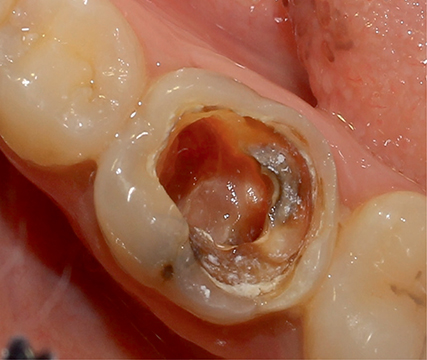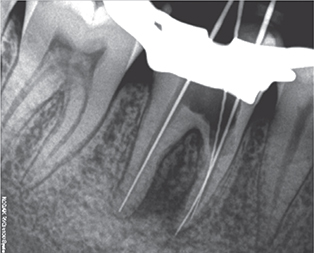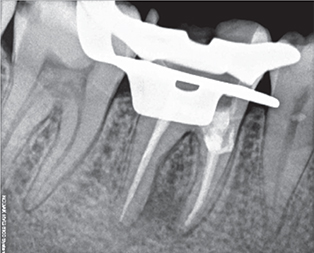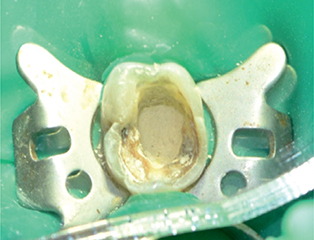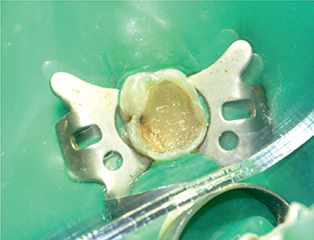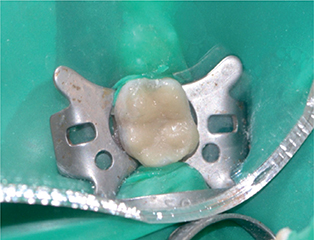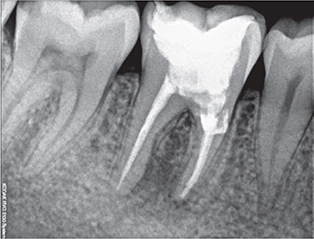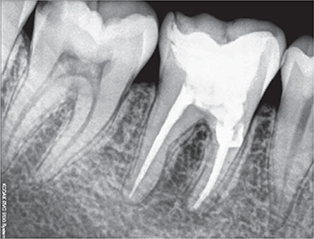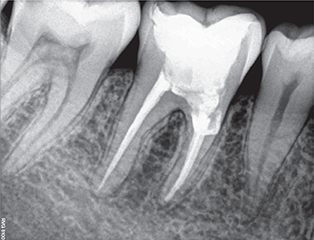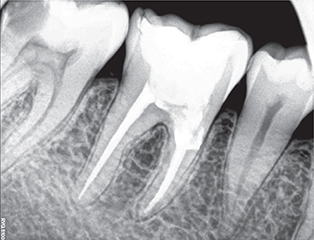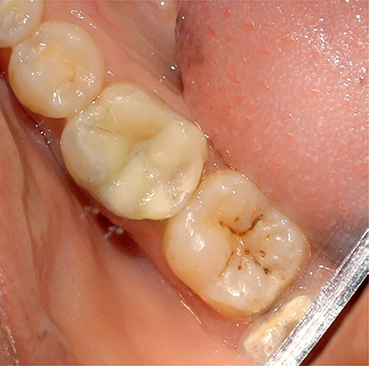Restor Dent Endod.
2016 May;41(2):143-147. 10.5395/rde.2016.41.2.143.
Fibre reinforcement in a structurally compromised endodontically treated molar: a case report
- Affiliations
-
- 1Department of Conservative Dentistry and Endodontics, Goa Dental College and Hospital, Bambolim, India. renita.soares2289@gmail.com
- KMID: 2163297
- DOI: http://doi.org/10.5395/rde.2016.41.2.143
Abstract
- The reconstruction of structurally compromised posterior teeth is a rather challenging procedure. The tendency of endodontically treated teeth (ETT) to fracture is considerably higher than vital teeth. Although posts and core build-ups followed by conventional crowns have been generally employed for the purpose of reconstruction, this procedure entails sacrificing a considerable amount of residual sound enamel and dentin. This has drawn the attention of researchers to fibre reinforcement. Fibre-reinforced composite (FRC), designed to replace dentin, enables the biomimetic restoration of teeth. Besides improving the strength of the restoration, the incorporation of glass fibres into composite resins leads to favorable fracture patterns because the fibre layer acts as a stress breaker and stops crack propagation. The following case report presents a technique for reinforcing a badly broken-down ETT with biomimetic materials and FRC. The proper utilization of FRC in structurally compromised teeth can be considered to be an economical and practical measure that may obviate the use of extensive prosthetic treatment.
MeSH Terms
Figure
Reference
-
1. Stankiewicz NR, Wilson PR. The ferrule effect: a literature review. Int Endod J. 2002; 35:575–581.
Article2. Rocca GT, Rizcalla N, Krejci I. Fibre-reinforced resin coating for endocrown preparations: a technical report. Oper Dent. 2013; 38:242–248.
Article3. Shivanna V, Gopeshetti PB. Fracture resistance of endodontically treated teeth restored with composite resin reinforced with polyethylene fibres. Endodontology. 2013; 24:73–79.4. Yeng T, Messer HH, Parashos P. Treatment planning the endodontic case. Aust Dent J. 2007; 52:Supplement 1. S32–S37.
Article5. Garoushi S, Tanner J, Vallittu P, Lassila L. Preliminary clinical evaluation of short fibre-reinforced composite resin in posterior teeth: 12-months report. Open Dent J. 2012; 6:41–45.
Article6. Garoushi S, Mangoush E, Vallittu M, Lassila L. Short fibre reinforced composite: a new alternative for direct onlay restorations. Open Dent J. 2013; 7:181–185.
Article7. Xia Y, Zhang F, Xie H, Gu N. Nanoparticle-reinforced resin-based dental composites. J Dent. 2008; 36:450–455.
Article8. GC India: GC EverX Posterior. updated 2015 Dec 12. Available from: http://www.gcindiadental.com/products/compositerestoratives/everx-posterior.9. Garoushi SK, Shinya A, Shinya A, Vallittu PK. Fibre reinforced onlay composite resin restoration: a case report. J Contemp Dent Pract. 2009; 10:104–110.10. Garoushi S, Vallittu PK, Lassila LV. Continuous and short fibre reinforced composite in root post-core system of severely damaged incisors. Open Dent J. 2009; 3:36–41.
Article11. Deliperi S. Direct fibre-reinforced composite restoration in an endodontically-treated molar: a three-year case report. Oper Dent. 2008; 33:209–214.
Article12. Visser HJ, Brandt PD, de Wet AF. Fracture strength of cusp-replacing fibre-strengthened composite restorations. SADJ. 2014; 69:202.13. Zogheib LV, Pereira JR, do Valle AL, de Oliveira JA, Pegoraro LF. Fracture resistance of weakened roots restored with composite resin and glass fibre post. Braz Dent J. 2008; 19:329–333.
Article14. Priyalakshmi S, Ranjan M. Review on Biodentine-a bioactive dentin substitute. IOSR J Dent Med Sci. 2014; 13:13–17.
Article15. Biodentine-Septodont R&D Department: Biodentine. Active biosilicate technology. Scientific file. updated 2016 Jan 31. Available from: http://www.plandent.no/images/Marketing/Infosenter/Biodentine%20Scientific%20File_web_dokumentasjon.pdf.
- Full Text Links
- Actions
-
Cited
- CITED
-
- Close
- Share
- Similar articles
-
- Retrospective study of fracture survival in endodontically treated molars: the effect of single-unit crowns versus direct-resin composite restorations
- Root resection of compromised molars
- Post-endodontic Restoration on Erupting Permanent First Molars Using Endocrown with a Polyglass Composite Resin: Report of Two Cases
- Two treatment approach to skeletal Class III : A case report on sisters
- Characteristics of a deep crack occurred on intact molars without restoration

